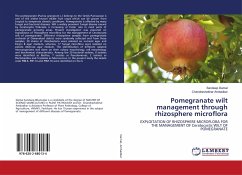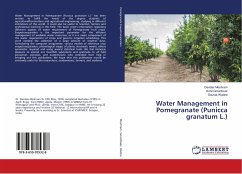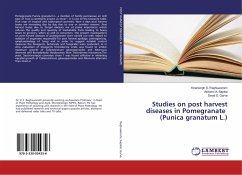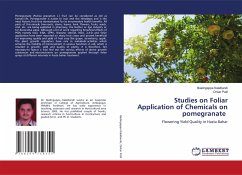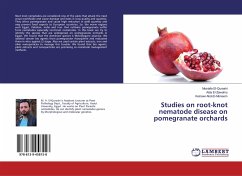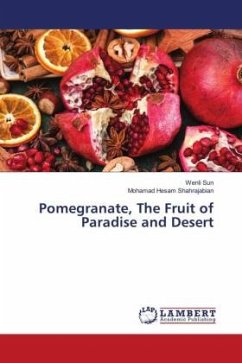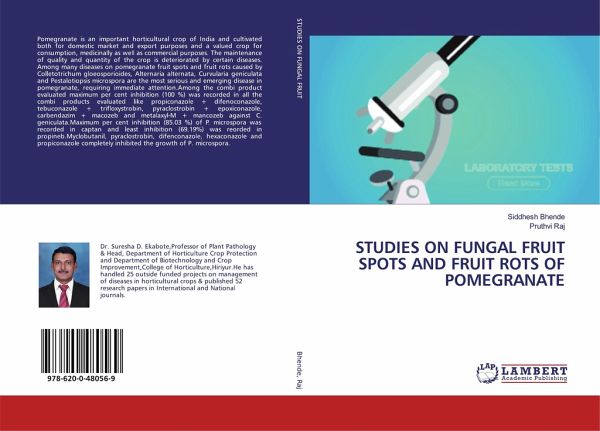
STUDIES ON FUNGAL FRUIT SPOTS AND FRUIT ROTS OF POMEGRANATE
Versandkostenfrei!
Versandfertig in 1-2 Wochen
47,99 €
inkl. MwSt.

PAYBACK Punkte
24 °P sammeln!
Pomegranate is an important horticultural crop of India and cultivated both for domestic market and export purposes and a valued crop for consumption, medicinally as well as commercial purposes. The maintenance of quality and quantity of the crop is deteriorated by certain diseases. Among many diseases on pomegranate fruit spots and fruit rots caused by Colletotrichum gloeosporioides, Alternaria alternata, Curvularia geniculata and Pestalotiopsis microspora are the most serious and emerging disease in pomegranate, requiring immediate attention.Among the combi product evaluated maximum per cent...
Pomegranate is an important horticultural crop of India and cultivated both for domestic market and export purposes and a valued crop for consumption, medicinally as well as commercial purposes. The maintenance of quality and quantity of the crop is deteriorated by certain diseases. Among many diseases on pomegranate fruit spots and fruit rots caused by Colletotrichum gloeosporioides, Alternaria alternata, Curvularia geniculata and Pestalotiopsis microspora are the most serious and emerging disease in pomegranate, requiring immediate attention.Among the combi product evaluated maximum per cent inhibition (100 %) was recorded in all the combi products evaluated like propiconazole + difenoconazole, tebuconazole + trifloxystrobin, pyraclostrobin + epoxiconazole, carbendazim + macozeb and metalaxyl-M + mancozeb against C. geniculata.Maximum per cent inhibition (85.03 %) of P. microspora was recorded in captan and least inhibition (69.19%) was reorded in propineb.Myclobutanil, pyraclostrobin, difenconazole, hexaconazole and propiconazole completely inhibited the growth of P. microspora.



